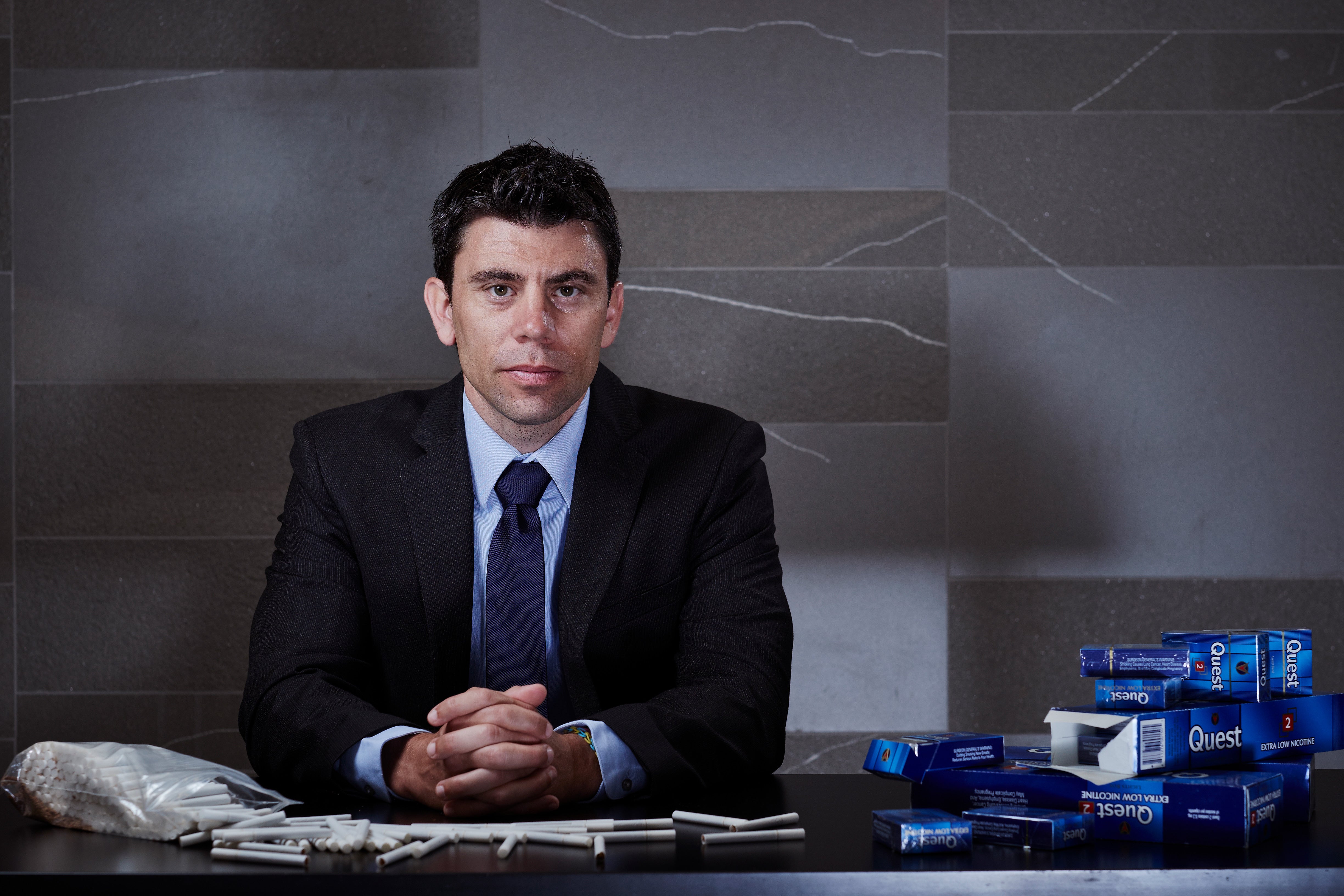
Back to the future
Vaping trends are sweeping the globe, making us revisit the lessons we learned decades ago

Vaping trends are sweeping the globe, making us revisit the lessons we learned decades ago
By Natalie Quinlan University Relations
David Hammond
Faculty of Applied Health Sciences
> Professor & CIHR/PHAC Applied Public Health Chair
> School of Public Health & Health Systems, University of Waterloo
David Hammond was out for a walk when a red package caught his eye. Lying on the ground was a cigarette box, plastered with health warnings and vivid imagery of blackened organs. It was at that moment his career aspirations clicked into place.
“I was interested in becoming a clinical psychologist, but then someone once said to me: ‘That thing lying on the ground – that cigarette box – that’s a health intervention that six million people are walking around with right now,” Hammond says. “So, if I can do something to make that intervention a bit better, then my reach can be much greater.”
Now a professor with the Faculty of Applied Health Sciences, Hammond is an internationally recognized researcher who focuses on chronic disease prevention and global health in areas including tobacco control policy. Working closely with governments around the world, Hammond has served as an advisor for the World Health Organization and an expert witness in court cases.
It’s this experience that’s led Hammond to be a reoccurring spokesperson for an issue that, for the first time in 40 years, is going up instead of down amongst youth – nicotine use, or, more specifically, vaping.
“It’s like we’re going back to the future and unfortunately, it wasn’t necessary,” Hammond says. “We didn’t need to risk addicting a new generation of kids and that’s what frustrates me about it.”
Over the course of his research, Hammond has surveyed about 36,000 youth between the ages of 16 and 19-years-old across England, the U.S. and Canada. The results revealed that between 2017 and 2018, when Canada opened its market to JUUL (the world’s most popular e-cigarette brand), the rates of Canadian youth who had tried vaping doubled. In 2019, that data doubled again. Today, Statistics Canada estimates about a quarter of young people have tried vaping—that’s more than 2.1 million individuals.
“Up until a couple of years ago, kids were experimenting with these products, but almost none used e-cigarettes regularly,” Hammond says. “And then we had an innovation in e-cigarette technology that was driven by JUUL, which combined a highly effective marketing campaign with changes to the chemistry of e-cigarette liquid and made it easier to inhale much higher levels of nicotine.”
Previous e-cigarette devices delivered between three and 24 milligrams of nicotine, while JUUL offers more than 50 milligrams. This new technology created an explosion of use in North America, sparking governments to issue lawsuits against the company and questioning how to manage the growing phenomenon.
“The rationale behind these products is to help smokers quit. We have the patch or the gum, but e-cigarettes deliver nicotine more effectively,” Hammond says. “I firmly believe that you can have these products available to adult smokers that will help them quit without having a quarter to a third of all high school kids using them, but the only way to do that is through effective laws and regulations.”
That’s where Hammond’s work comes in. Alongside other researchers, Hammond works from the ground up, helping everyone from local school boards, to big NGOs and federal governments all around the world to best establish a path forward. For him, it all starts with youth.
“Instead of trying to enforce kids not to use these products, the best thing is to change the aspects of the products that appeal to them in the first place,” Hammond says. “Someone who is trying to save their life and stop smoking doesn’t need chocolate chip cookie dough flavour.”
The solution, according to Hammond, is to determine the best regulatory mix of what makes these products useful and what makes them harmful. His work at Waterloo helps establish everything from what’s in these vaping products, to who’s using them, to the effects advertising campaigns have on its consumers. Hammond then takes this information and shares it in various ways, like public service campaigns or as an expert witness in court cases. It’s a long and often cumbersome road toward any legal change, but a necessary route when tackling a multi-billion-dollar business.
“I feel privileged to do this work and it’s a big responsibility, one that’s given me more grey hair than I should have,” Hammond says through a chuckle. “But it’s important because vaping skews heavily towards young people and if we’re going to have these products on the market, we better get our act together in terms of regulating them.”
As of January 14, JUUL Canada announced that it will temporarily stop producing fruit-flavoured vaping pods. According to Micheal Nederoff, president of JUUL Labs, the company will reconsider introducing them “under the guidance and regulation of Health Canada.”

Read more
Kinesiology researcher Nikolas Knowles to test new dual-energy imaging with Arthritis Society funding

Read more
A new healthy living program and a virtual reality exercise game will support people living with dementia at home and in long-term care

Read more
How innovative research and medical technology can prevent falls
The University of Waterloo acknowledges that much of our work takes place on the traditional territory of the Neutral, Anishinaabeg, and Haudenosaunee peoples. Our main campus is situated on the Haldimand Tract, the land granted to the Six Nations that includes six miles on each side of the Grand River. Our active work toward reconciliation takes place across our campuses through research, learning, teaching, and community building, and is co-ordinated within the Office of Indigenous Relations.